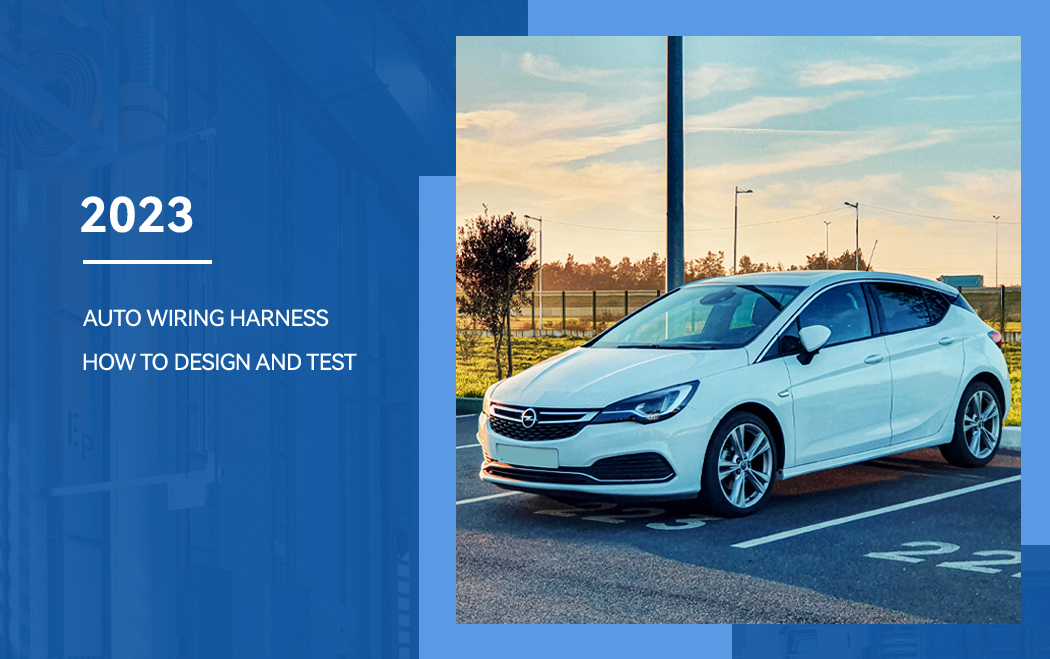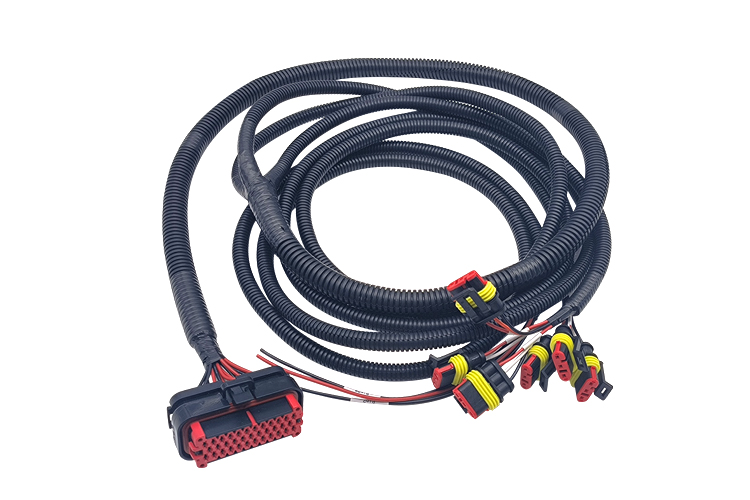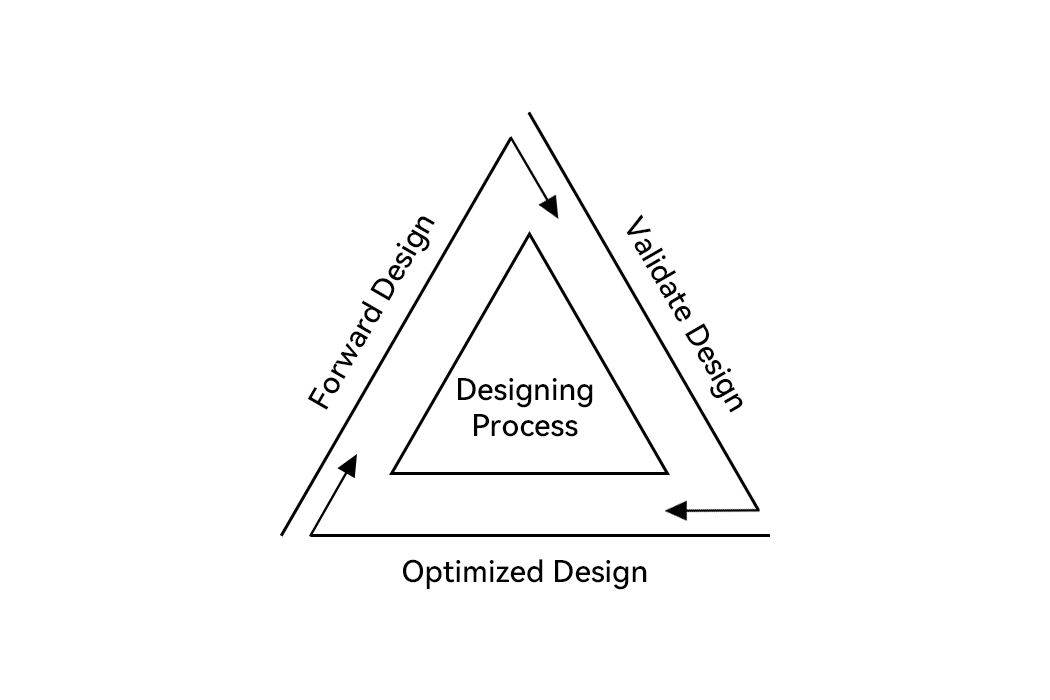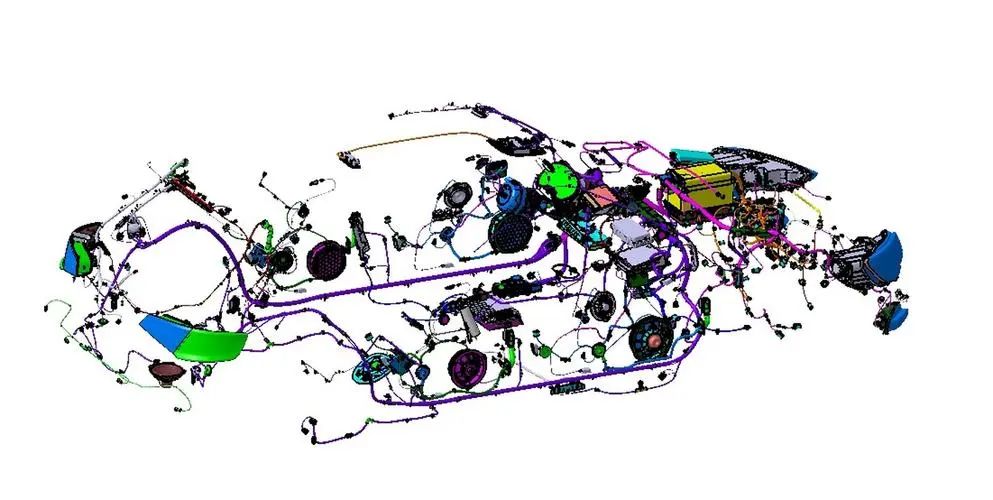
With the increase of automotive electrical equipment, the electrical functions and functional configuration of the vehicle are becoming more and more complex, and the requirements for the rationality and optimal design of the wire harness are gradually increasing. At the same time, under the trend of gradually decreasing vehicle cost, the cost pressure of wire harness is also gradually increasing. In view of the above reasons, the attention of these two tasks has gradually increased to verify whether the design of the wire harness is reasonable and how to optimize the auto wire harness system to achieve the optimal design.

1. Necessity of wire harness system design verification
The wire harness connects all controllers, actuators, and sensors on the vehicle, and plays the role of power distribution and signal transmission in the vehicle. Therefore, whether the design of the wire harness is reasonable or not directly affects the electrical function safety of the vehicle and the reliability of the vehicle.
If the design of the wire harness is unreasonable and cannot meet the requirements of the actual vehicle load, there will be accidents such as the life of the fuse is too short, the fuse is blown abnormally, the wire is overloaded, smoke or even fire.
If the design redundancy of the wire harness is too large, it is not conducive to the cost control of the vehicle, and is not conducive to the quality and fuel economy of the vehicle.
To sum up, the design of the wire harness is reasonable and appropriate, and the design of the wire harness is optimized, which has become the focus of more and more host manufacturers and wire harness manufacturers.
Combined with the product forward development mode, the whole design process is complete, controllable and optimal through the design-verification-optimization closed-loop method (Figure 1) (Figure 1 Schematic diagram of the design process)
(Figure 1 Schematic diagram of the design process)
2. Development and classification of wire harness design verification
Design verification can also be called "DV test", DV stands for Design Verification.
The design verification of the wire harness mainly verifies the rationality of the design scheme through testing, and with the popularity and utilization of software such as CATIA, CHS, and IPS gradually increasing, part of the verification work can also be realized through system simulation.
According to the classification of test tools, design verification can be divided into three methods: software simulation, bench test, and real vehicle test.
1) The advantage of software simulation is that it can be implemented in the forward design stage. Verify through software simulation whether the wiring harness assembly is reasonable, whether the vehicle wiring harness topology is appropriate, whether the power distribution principle design and electrical device layout are reasonable, etc. However, the software simulation is all simulated by the calculated parameters, which cannot realize the test verification of the actual vehicle situation and various working conditions of the actual vehicle.
2) Bench testing is generally carried out at the C sample stage of the electrical device. At this time, the function of the electrical device is perfect, the state is close to the mass production sample, the performance is relatively stable, and the reliability of the test result is high. On the electrical bench, the actual parts are tested by simulating the operating conditions of the electrical appliances in the actual vehicle, which has the advantages of high reliability of the test results and close to the actual vehicle operating conditions, but the layout of the wiring harness cannot be completed on the bench Check, some real vehicle conditions cannot be simulated (such as the current distribution of the ground point of the vehicle).
3) The real vehicle test is generally carried out when the electrical device C sample is in the OTS state of the whole vehicle. The actual vehicle test takes into account both the wiring harness layout verification and the power distribution design verification, and can realize the design verification such as the rationality evaluation of the actual vehicle layout of the wire harness system, power distribution design verification, and ground point current distribution. However, the actual vehicle test requires the resources of the whole vehicle, and the investment is also the highest. In the actual vehicle test, overload or abuse of electrical functions will occur, which will also damage the vehicle. After the test, the vehicle will generally be scrapped, and the resource reuse rate is not high.
Table 1 summarizes the advantages and disadvantages of each test method. At present, most OEMs will use bench testing, and a few OEMs will use real vehicle testing.
3. Introduction of wire harness design verification test items
The wire harness design verification test items can be mainly divided into two categories: wire harness layout scheme verification and power distribution principle design verification.
According to the refinement of the test items, wiring inspection, assembly, electrical load test, wire short circuit test, grounding system test, voltage drop test;
3.1. Wiring inspection
Conduct wiring harness wiring inspection under software simulation or real vehicle status, mainly to check the rationality of the external protection design of the wiring harness, and carry out targeted content inspections for each area through the vehicle partition.
3.2. Assemblability
Check the wire harness assembly for certain locations where there are wire harness connections and assemblies (such as the process of connecting the bumper wire harness to the body, the process of connecting the engine wire harness to the front cabin wire harness), the vehicle wire harness is easy to assemble, and it is easy to disassemble for frequent maintenance. Reasonable performance. the
3.3. Electrical load test
The electrical load test mainly verifies whether the matching relationship between the load, the wire and the fuse is appropriate. It is usually tested on a bench or a real vehicle, under the condition of the steady-state output voltage of the generator after the vehicle is started (the smart generator can be set according to the average value of the rated voltage output range or according to negotiation), under different working conditions , record the normal working current of each load, and some motor loads need to additionally record the locked rotor current, PTC protection time, etc. Compare the results obtained through the actual test with the diameter of the wire and the type of the fuse to confirm whether the selection of the fuse and the wire is appropriate.
Check the speaker ICD file, the estimated operating current provided in the file is 6 A, which is much smaller than the measured current of 10 A. Through actual testing, it is found that the normal working current of the speaker has exceeded the rated capacity of the MINI fuse, but because the speaker is a short-term work load, according to the heat integral of I2t, the fuse will not be blown immediately after the speaker works once, but will The speaker works several times, and after the cumulative effect reaches the fusing condition, the fuse will be blown again.
The direct consequence of this design is that the life of the fuse is very short, and the user needs to replace the fuse frequently during the actual use of the vehicle.
In summary, combined with the test results, the power distribution design is optimized, and the MINI type 15 A fuse is selected to avoid the above problems.
3.4. Wire short circuit test
The wire short circuit test mainly verifies whether the matching relationship between the wire and the fuse is appropriate. It is usually tested on a bench or a real vehicle. Under normal load conditions, the power supply circuit is directly short-circuited or overloaded. Check whether the fuse is blown in time during the test to protect the wire.
During the overload test, use 135% and 200% of the normal operating current value of the electrical load as the overload current test. It is also necessary to ensure that the temperature rise of the wire is within a reasonable period, and the fuse must be blown in time; or during the overload process, the controller / The actuator starts the overload protection in time to avoid the continuous occurrence of overload current.
After inspection, the inside of the speed control module is only the speed control resistor, and neither the blower nor the speed control module has an overload protection device. When overloaded, the speed of temperature rise of the speed control resistor is much faster than that of the wire. Before the wire smokes and the fuse is blown, Speed regulating resistor burnt out.
After the above problems occur, an overload detection device is installed in the blower, and the current is cut off in time when overload occurs, so as to avoid burning the speed regulating resistor.
3.5. Ground system test
The grounding system test mainly verifies the current distribution of the grounding point of the wiring harness, the fault phenomenon when the grounding point is loose, whether there is a reverse current or a sneak path, and whether there is a serious electrical function failure, so as to avoid the butterfly effect or seriously endanger driving. Safety failure phenomenon. It is usually tested on a real vehicle. Under normal load conditions, the current distribution of each ground point is tested, the current distribution is recorded, the matching relationship between the current and the wire is analyzed, and the potential of each ground point is equal.
After the above test is completed, turn on all the loads of the vehicle, remove each ground point separately, observe whether there is any abnormal phenomenon when the vehicle fails to ground, and measure whether there is a reverse current on the removed ground point. If there is a reverse current, Combined with the electrical schematic diagram to analyze the cause of current generation.
To prevent the loosening of the ground, you can strengthen the inspection of the assembly process, or use the loop ground to prevent it. The space here is limited, so I won’t explain it here.
3.6. Voltage drop test
The voltage drop test mainly verifies whether the voltage at the interface from the power distribution circuit to the electrical appliance meets the voltage requirements of the electrical appliance. Generally speaking, the voltage range of electrical appliances on a car is relatively wide, for example, 9~16 V can work normally, and the significance of the voltage drop test cannot be well reflected at this time. However, for vehicles with idle start and stop, the voltage will drop sharply when restarting after stopping. At this time, it is necessary to confirm that all electrical appliances can work normally without power failure.
For wiring harness circuits that meet the power supply voltage requirements of electrical appliances but have excessive voltage drops, checks should also be carried out to eliminate voltage drops as much as possible and reduce power loss caused by wiring harness circuits as much as possible.
4. Summary
From the point of view of forward product development, the relevant testing work of wiring harness design verification can make the development and design work form a closed loop; from the point of view of product optimization, combined with the testing of actual parts and real vehicles, product design verification and design optimization can be effectively realized Work. With the continuous improvement of design quality, the design verification work gradually develops in the direction of preliminary verification and system simulation verification.